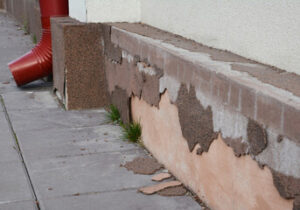Roofers Helena MT install, repair and replace the roofs of homes and buildings. They work with a wide range of materials including shingles, bitumen, steel and aluminum.

A career as a Roofer requires strong manual dexterity and the ability to work at heights in adverse weather conditions. It also demands a good understanding of construction processes and knowledge of industry safety protocols.
If you’re in the market for a career change, one that offers plenty of room for growth and new experiences, then you may want to consider becoming a roofer. But before you make the leap, it’s important to understand what the job entails. The job description is an essential part of the application process and it helps to attract qualified candidates while deterring unqualified ones.
The primary job duties of roofers are to repair, replace, and install the roofing on residential and commercial buildings to keep the interiors dry and safe. They also inspect the roofing to determine its condition and make necessary repairs. In addition, they install gutters and drainage systems, which help to prevent water buildup and structural damage.
These professionals are skilled in working with a variety of materials and roofing types, including shingles, bitumen, tiles, and metal. They use specialized equipment and advanced techniques to ensure that all projects are completed safely and efficiently. Additionally, they are familiar with local building codes and safety regulations.
Another key aspect of a roofer’s job is to prepare estimates for clients. This includes taking detailed measurements and calculating the amount of material needed to complete a project. They are also responsible for laying down layers of roofing materials to create long-lasting and weatherproof roofs. These layers include a vapor barrier, insulation, and the chosen roofing material, such as traditional or solar shingles.
Roofers are also expected to maintain a clean and organized workspace, communicate effectively with other team members, and follow strict safety protocols when working at heights. They are required to wear appropriate safety gear and a harness, as well as test and inspect their work for any potential issues.
Imagine noticing a small water stain on your ceiling after a heavy rainfall and attempting to fix it yourself by climbing up on the roof without proper safety precautions. Not only would this be dangerous, but it could lead to severe injuries. But professional roofers are trained in industry best practices and follow strict safety protocols when working on a roof.
Education and Training Requirements
Roofers don’t need a high school diploma to start their career, but they should be familiar with basic construction and roofing materials. Most roofers start by entering a formal apprenticeship program sponsored by trade groups or roofing companies. These programs typically last 2 to 4 years and combine classroom instruction with on-the-job training. Apprentices work under the supervision of experienced roofers to learn the basics of the job. Those with previous construction or roofing experience may progress through the program more quickly. Local regulations and requirements also affect the duration of the training period.
Roofer training requires physical strength and stamina. The job involves heavy lifting, climbing, stooping, and kneeling for long periods of time in hot weather. It also requires good balance and the ability to handle tools. Roofers need to be comfortable working on sloped surfaces at heights, and they should wear personal protective equipment to reduce their risk of injury.
Many states require roofers to be licensed. This requirement can vary from one state to another, but it usually involves passing an exam and demonstrating proficiency in roofing skills. Obtaining a license can help roofers gain jobs, build trust with clients, and command higher prices for their advanced skills.
Roofers also need to continue their education and training to keep up with changing industry trends. They should attend workshops and courses to improve their knowledge of roofing materials, techniques, and safety procedures. In addition, they should take advantage of opportunities to upgrade their roofing system with new roofing materials and styles. Continuing education and certification is especially important for roofers who want to advance in their careers and become supervisors or estimators. Those who specialize in specific types of roofing can also earn additional income by offering specialty services. In addition, it is essential that roofers maintain their skills by practicing regularly on real roofing projects.
Working Conditions
Roofers are exposed to many hazards on the job. They work with ladders, scaffolding and roofs that are often very steep and dangerous. One slip and the roofer can fall and sustain serious injury or even death. Falls are the leading cause of death in the construction industry and roofers account for 34% of those fatalities.
They also use power tools that can be dangerous if not used properly. These include nail guns, saws and air compressors. When working on a roof, they are also exposed to overhead power lines that present the risk of electrocution.
Lastly, they must work in extreme temperatures, particularly heat. This can make it difficult to concentrate and be safe on the roof. It can also lead to dehydration, which is a major safety concern for workers at such heights. This is why it is important that roofers drink plenty of water and take breaks frequently while on the job. A roofer who is not properly hydrated can become dizzy and lose his or her balance. This can be very dangerous, especially at such high heights.
Salary
Roofers are in high demand due to the need for roofing services, particularly in areas impacted by extreme weather events. As such, their salaries are relatively high compared to some other trade industry professionals. However, average yearly and hourly pay amounts do vary by location, as the cost of living and demand for roofing professionals differ from state to state.
While it isn’t a career for everyone, for those who enjoy working outdoors and want to make a decent salary, this is a great profession. With the right skills and equipment, roofers are able to complete construction and repair projects in a fraction of the time that it would take inexperienced workers. This makes it a good choice for those who have a family and want to be financially stable.
The best way to become a roofer is through a formal apprenticeship program, which offers superior education at little or no cost through a combination of classroom instruction and on-the-job training. Those who are veterans can use their GI Bill benefits to help pay for their training. Once they complete their apprenticeships, they are considered journey workers and can begin making a higher salary.
As with any job, the more experience you have as a roofer, the better your earning potential. You can also increase your salary by pursuing additional certifications and specialized skill sets. Many roofers also own their own businesses, which can be a lucrative option if you are able to find clients and keep up with demand.
Roofers often use a variety of tools when installing new roofs or repairing old ones, including roofing shovels, pry bars, tape measures, chalk lines, drills, nail guns, and framing squares. They may also need to use safety equipment such as harnesses and lanyards.
